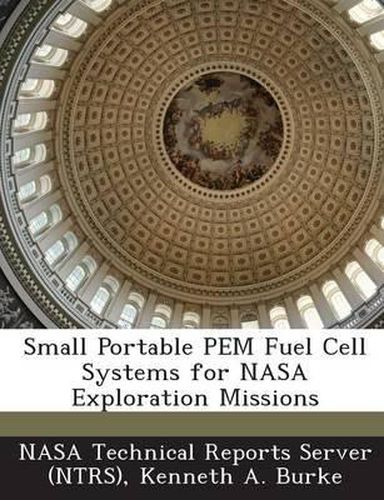Readings Newsletter
Become a Readings Member to make your shopping experience even easier.
Sign in or sign up for free!
You’re not far away from qualifying for FREE standard shipping within Australia
You’ve qualified for FREE standard shipping within Australia
The cart is loading…






Oxygen-Hydrogen PEM-based fuel cell systems are being examined as a portable power source alternative in addition to advanced battery technology. Fuel cell power systems have been used by the Gemini, Apollo, and Space Shuttle programs. These systems have not been portable, but have been integral parts of their spacecraft, and have used reactants from a separate cryogenic supply. These systems typically have been higher in power. They also have had significant ancillary equipment sections that perform the pumping of reactants and coolant through the fuel cell stack and the separation of the product water from the unused reactant streams. The design of small portable fuel cell systems will be a significant departure from these previous designs. These smaller designs will have very limited ancillary equipment, relying on passive techniques for reactant and thermal management, and the reactant storage will be an integral part of the fuel cell system. An analysis of the mass and volume for small portable fuel cell systems was done to evaluate and quantify areas of technological improvement. A review of current fuel cell technology as well as reactant storage and management technology was completed to validate the analysis and to identify technology challenges.
$9.00 standard shipping within Australia
FREE standard shipping within Australia for orders over $100.00
Express & International shipping calculated at checkout
Oxygen-Hydrogen PEM-based fuel cell systems are being examined as a portable power source alternative in addition to advanced battery technology. Fuel cell power systems have been used by the Gemini, Apollo, and Space Shuttle programs. These systems have not been portable, but have been integral parts of their spacecraft, and have used reactants from a separate cryogenic supply. These systems typically have been higher in power. They also have had significant ancillary equipment sections that perform the pumping of reactants and coolant through the fuel cell stack and the separation of the product water from the unused reactant streams. The design of small portable fuel cell systems will be a significant departure from these previous designs. These smaller designs will have very limited ancillary equipment, relying on passive techniques for reactant and thermal management, and the reactant storage will be an integral part of the fuel cell system. An analysis of the mass and volume for small portable fuel cell systems was done to evaluate and quantify areas of technological improvement. A review of current fuel cell technology as well as reactant storage and management technology was completed to validate the analysis and to identify technology challenges.